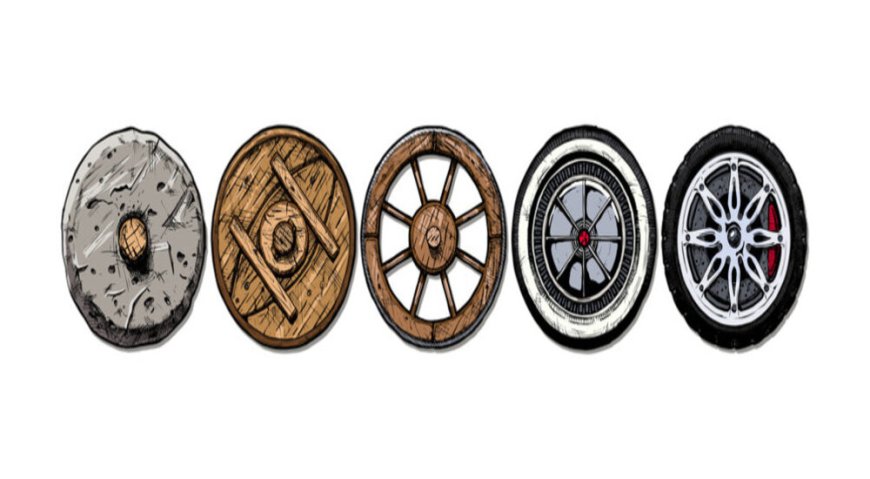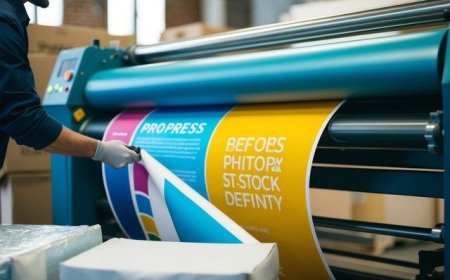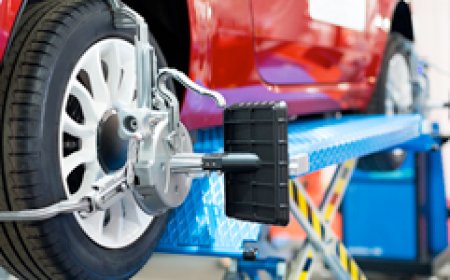The Evolution of Tyres: From Early Rubber to Smart Tyres
From solid rubber to AI-powered smart tyres, see how tyre technology has advanced to boost safety, efficiency, and performance on modern roads.

From the dusty trails of horse-drawn carts to todays sleek electric vehicles cruising along futuristic highways, tyres have come a long way. While often overlooked, the tyre is one of the most critical components of any vehicle a true unsung hero of automotive innovation. Its the only part of your car that touches the road, directly influencing your safety, ride quality, and fuel efficiency.
In this article, well take a journey through the fascinating history of tyres from their humble beginnings to cutting-edge smart technology and see how theyve evolved to meet the needs of modern drivers, especially in challenging environments like the UAE.
1. Where It All Began: Wooden Wheels and Simple Bands
The story of tyres starts long before cars even existed with the invention of the wheel itself, around 3500 BC in ancient Mesopotamia. Early wheels were made of solid wood and used on carts and wagons. But as roads became more traveled and loads got heavier, people began wrapping these wooden wheels with bands of leather or metal to protect them from wear and tear.
These early tyres didnt offer comfort or grip they were simply functional. But they laid the foundation for what was to come.
2. The Rubber Revolution
The 1800s brought one of the biggest breakthroughs in tyre history: rubber. Thanks to Charles Goodyears discovery of vulcanization in 1839 a process that makes rubber durable and elastic rubber started finding its place in transportation.
In 1846, Scottish inventor Robert William Thomson came up with the idea of the pneumatic tyre a rubber tube filled with air to cushion the ride. It didnt catch on right away, but it planted a crucial seed for the future.
3. The Pneumatic Tyre Takes Off
It was in 1888 that things truly changed. John Boyd Dunlop reinvented the pneumatic tyre for his sons bicycle, and the result was a smoother, faster ride. This time, people noticed. Pneumatic tyres began spreading rapidly from bicycles to motor vehicles in the early 1900s.
Why did this matter? Air-filled tyres absorb shock, reduce vibration, and give better control a night-and-day difference from solid rubber. By the 1920s, most cars were equipped with inflatable rubber tyres, and the world never looked back.
4. Going Tubeless and Radial
As cars got faster and road networks expanded, tyres needed to keep up. Enter radial tyres, introduced by Michelin in 1947. These used steel belts placed at right angles to the tread, improving stability, lifespan, and fuel economy.
A few years later, tubeless tyres hit the scene. By removing the inner tube, drivers experienced fewer blowouts, safer repairs, and overall better performance. These two changes marked a leap forward in how tyres handled speed, load, and long-distance travel.
5. The Rise of Performance and Specialized Tyres
By the late 20th century, tyre makers were no longer just thinking about durability. They started designing tyres for different driving needs whether that meant off-roading through sand dunes or gliding quietly through city streets.
Tyres were now categorized: all-season, winter, performance, touring, mud-terrain, and more. Manufacturers experimented with new rubber compounds and intricate tread patterns, giving drivers better options for specific weather, terrain, and vehicles.
Tyre sizing also became standardized. Youve likely seen markings like 205/55 R16 on your sidewall a simple way to tell the width, aspect ratio, and rim size, making tyre replacement more straightforward than ever.
6. Enter the Digital Age: Tyres Get Smart
Fast forward to today, and tyres have become part of your cars tech ecosystem. Modern smart tyres are embedded with sensors that constantly monitor pressure, temperature, tread depth, and even load. This information is relayed to your cars dashboard or a mobile app, letting you act before a small issue becomes a serious problem.
Why does this matter, especially in places like the UAE? Road temperatures can soar past 60C in summer extreme heat that can wreak havoc on tyres. Smart tyres help drivers detect drops in pressure or rising temperatures before a blowout occurs, adding a crucial layer of safety.
Theyre also a big help for fleet managers, who can monitor multiple vehicles in real-time, reducing downtime and maintenance costs.
7. Looking Ahead: Sustainability and Innovation
With climate change and environmental sustainability in the spotlight, tyre companies are rethinking their materials and processes. Eco-friendly tyres are now being developed using alternatives like soybean oil, dandelion-derived rubber, and recycled plastics all while maintaining durability and grip.
Another exciting development is the airless tyre. These solid yet flexible designs promise zero punctures, consistent performance, and minimal maintenance. While theyre not mainstream yet, major brands are already testing them on delivery vehicles, construction equipment, and even future passenger cars.
And then theres the EV boom. Electric vehicles are heavier and accelerate faster, which puts more stress on tyres. Thats why manufacturers are now creating EV-specific tyres with stronger sidewalls, quieter tread patterns, and low rolling resistance to support better range and ride comfort.
8. Tyres Today: Made for Modern Life
Modern tyres are marvels of engineering built not just for function, but for precision, safety, and versatility. A tyre like the 205/55 r16 is popular among compact and midsize cars for its balance of stability, fuel economy, and comfort on UAE roads.
Drivers can now choose from tyres that suit nearly every need from daily commuting and long-haul driving to desert adventures and high-performance racing.
Whether you're looking for fuel efficiency, better road grip, quiet rides, or longer lifespan, todays tyres offer more options than ever before.
Conclusion: More Than Just Rubber
The evolution of tyres is a story of ingenuity, innovation, and adaptation. From strips of leather wrapped around wooden wheels to AI-connected, sensor-loaded smart tyres weve come a long way.
Todays tyres arent just pieces of rubber. Theyre advanced tools designed to enhance your driving experience in every way: keeping you safe, improving performance, and even helping you lower your environmental impact.
As vehicles become smarter, faster, and greener, the tyres beneath them will continue to evolve too. One thing is certain whatever the future holds, tyres will keep rolling forward, just like the drivers who rely on them every day.





































